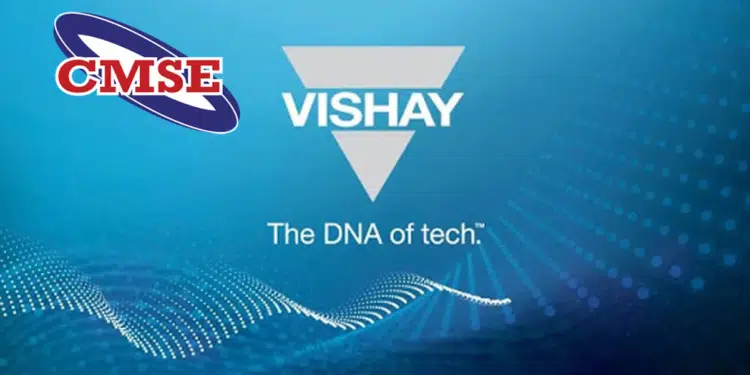Vishay Intertechnology, Inc. announced its lineup for the 2021 Components for Military and Space Electronics (CMSE) Virtual Conference, taking place April 19-23. For the event, Vishay will be showcasing its extensive offering of military-qualified, COTS, and space-grade capacitors, power inductors, and resistors. In addition, the company’s Tantalum Division will be conducting two technical presentations.
Now in its 24th year, CMSE is the premier event focused on the design, reliability, and application of electronic components for use in avionics, aerospace, military, and commercial space systems. At the conference, Vishay Custom Magnetics will be highlighting a new series of space-grade IHLP power inductors for satellite power applications. Vishay Vitramon will be displaying a wide range of military-qualified, surface-mount multilayer ceramic capacitors (MLCC), in addition to a new series of AEC-Q200 qualified Lead (Pb)-Bearing Finish MLCCs for tin whisker mitigation in low earth orbit satellites (LEO).
Featured military-qualified tantalum capacitors at CMSE 2021 will include through-hole, surface-mount, and high energy wet tantalum capacitors, in addition to Vishay Sprague conformal-coated and molded solid surface-mount tantalum chip capacitors. Vishay Sprague will also highlight Hi-Rel COTS solid surface-mount tantalum capacitors with MIL screening. vPolyTan™ surface-mount polymer capacitors on display will include Hi-Rel COTS devices and stacked arrays that undergo high reliability processing.
At the conference, Vishay Dale will be showcasing a wide range of military-qualified resistors with established reliability. Devices on display will include leaded through-hole metal film resistors; thick and thin film chip resistors; leaded and housed wirewound devices; and thick and thin film resistor networks.
On Tuesday, April 20, Vishay’s Jon Rhan and Mike Mosier will present “Surface-Mount Wet Tantalum Capacitor Technology,” which will highlight the performance advantages of these devices compared to other capacitor technologies. Joe Vattimo will present “Stacked Polymer Tantalum Capacitors — Advanced Packaging Technology,” which will explore the benefits of Vishay’s new stacked polymer capacitor solutions.
More information about CMSE 2021 is available at https://www.tjgreenllc.com/cmse/.































